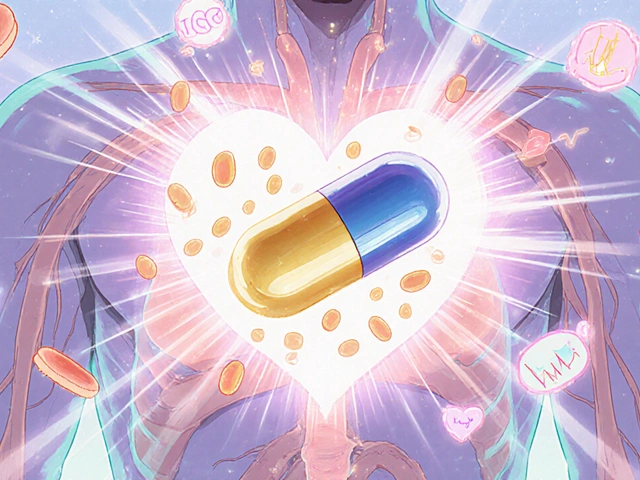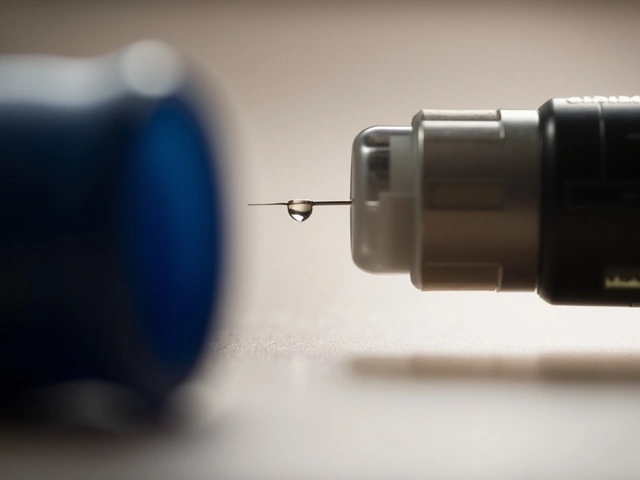Transplant Medication: A Practical Guide
When navigating the world of transplant medication, drugs prescribed to prevent organ rejection and manage post‑transplant health. Also known as organ transplant drugs, it plays a central role in graft survival, infection control, and long‑term quality of life. Immunosuppressive therapy, a subset of transplant medication that dampens the immune response is the backbone of any transplant regimen. Anti‑rejection drugs, specific agents like tacrolimus, cyclosporine or mycophenolate aimed at stopping acute rejection work hand‑in‑hand with steroids and antibiotics. Prophylactic antibiotics, preventive antibiotics that guard against opportunistic infections after surgery round out the protocol, while steroid therapy, short‑term glucocorticoids used to temper inflammation during the early post‑operative phase provides the finishing touch. These entities form a clear network: transplant medication encompasses immunosuppressive therapy; immunosuppressive therapy influences graft survival; anti‑rejection drugs require therapeutic drug monitoring; prophylactic antibiotics protect the weakened immune system; steroid therapy reduces early inflammation. Together they create a layered defense that lets a new organ thrive. Understanding each component—how it works, when it’s needed, and what side‑effects to watch for—sets the stage for safe, effective long‑term care.
Key Considerations for Managing Transplant Medication
Every transplant patient faces a unique balance of efficacy and safety. First, dosing must be individualized: calcineurin inhibitors like tacrolimus have a narrow therapeutic window, so blood level checks are mandatory to avoid toxicity or under‑immunosuppression. Second, side‑effect profiles differ: mycophenolate can cause gastrointestinal upset, while steroids may trigger weight gain, mood swings, or bone loss if used beyond the initial weeks. Third, drug‑drug interactions are common; for example, certain antibiotics raise tacrolimus levels, so clinicians adjust doses accordingly. Fourth, patient education matters—knowing when to take a pill, how to store it, and what symptoms signal a problem can prevent emergency visits. Fifth, long‑term monitoring involves kidney function tests, lipid panels, and viral screening (CMV, EBV) to catch complications early. Finally, lifestyle factors such as diet, alcohol intake, and smoking directly affect drug metabolism and graft health. The articles below dive into specific medications, from the latest data on antipsychotic‑interacting supplements to detailed comparisons of antibiotics and anti‑inflammatory agents. Whether you’re looking for evidence‑based guidance on evening primrose oil’s seizure risk or a side‑by‑side review of linezolid versus its rivals, the collection covers the breadth of pharmacologic considerations that intersect with transplant care. Use this overview to anchor your reading, then explore the individual posts for actionable dosing tips, safety alerts, and comparative insights that can help you or a loved one stay on track with their transplant medication plan.
Cyclosporine vs Other Immunosuppressants: Full Comparison Guide
A detailed side‑by‑side guide comparing cyclosporine with tacrolimus, mycophenolate, azathioprine, and belatacept, covering mechanisms, dosing, side effects, and practical switching tips.
About
Pharmacy Reviews
Latest Posts


Buy Cheap Generic Zovirax Online - Quick Guide
By Marcel Kornblum Oct 8, 2025

Semaglutide: A Promising Treatment for Fatty Liver Disease and More
By Marcel Kornblum Aug 17, 2024

Pitavastatin and Diabetes Risk: What You Need to Know About Its Metabolic Effects
By Marcel Kornblum Dec 4, 2025

